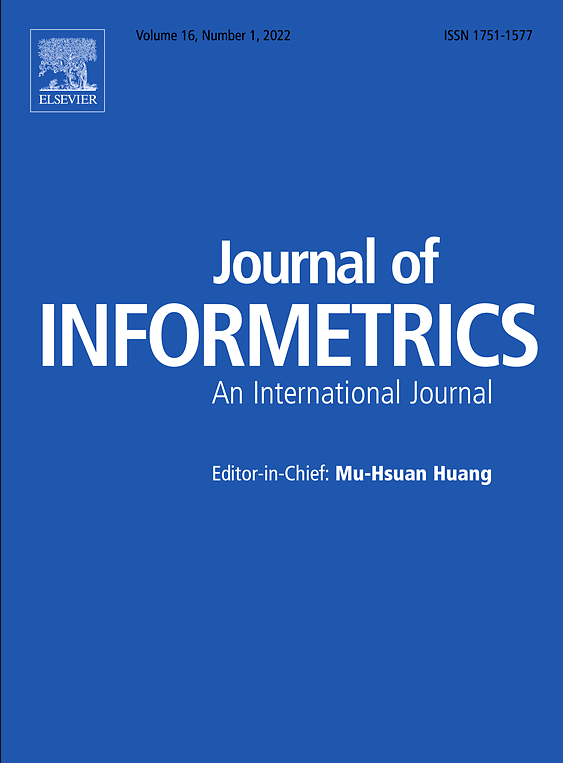Inside Front Cover: Editorial Board
Special section on performance-based research funding systems
Perverse effects of output-based research funding? Butler’s Australian case revisited
Response to van den Besselaar et al.: What happens when the Australian context is misunderstood
Some considerations about causes and effects in studies of performance-based research funding systems
A fight on epistemological quicksand: Comment on the dispute between van den Besselaar et al. and Butler
What year? Difficulties in identifying the effect of policy on university output
When social scientists disagree: Comments on the Butler-van den Besselaar debate
Do observations have any role in science policy studies? A reply
A tribute to Eugene Garfield: Information innovator and idealist
Are there any frontiers of research performance? Efficiency measurement of funded research projects with the Bayesian stochastic frontier analysis for count data
Search for evergreens in science: A functional data analysis
A rejoinder to the comments of Benedetto et al. on the paper “Critical remarks on the Italian research assessment exercise VQR 2011–2014” (Journal of Informetrics, 11(2): 337–357)
Reply to ‘Comment on “Using multi-level frontiers in DEA models to grade countries/territories” by G.-l. Yang et al. [Journal of Informetrics 10(1) (2016), 238–253]’
Comment on “Using multi-level frontiers in DEA models to grade countries/territories” by G.-l. Yang et al. [Journal of Informetrics 10(1) (2016), 238–253]
The geotemporal demographics of academic journals from 1950 to 2013 according to Ulrich’s database
A categorization of arguments for counting methods for publication and citation indicators
Counting citations: Generalizing the Perry-Reny index
Measuring the citation impact of journals with generalized Lorenz curves
Quantifying perceived impact of scientific publications
Predicting the age of researchers using bibliometric data
Do subjective journal ratings represent whole journals or typical articles? Unweighted or weighted citation impact?
Note on the theory of the w-index
Disaggregated research evaluation through median-based characteristic scores and scales: a comparison with the mean-based approach
Quantifying and suppressing ranking bias in a large citation network
On tit for tat: Franceschini and Maisano versus ANVUR regarding the Italian research assessment exercise VQR 2011–2014
Can the journal impact factor be used as a criterion for the selection of junior researchers? A large-scale empirical study based on ResearcherID data
Who is the ‘Journal Grand Master’? A new ranking based on the Elo rating system
Combining multiple scholarly relationships with author cocitation analysis: A preliminary exploration on improving knowledge domain mappings
Suitability of Google Scholar as a source of scientific information and as a source of data for scientific evaluation—Review of the Literature
Comment on “Does your surname affect the citability of your publications”
Comments on the correspondence “On tit for tat: Franceschini and Maisano versus ANVUR regarding the Italian research assessment exercise VQR 2011–2014”, J. Informetr., 11 (2017), 783–787
DataCite as a novel bibliometric source: Coverage, strengths and limitations
Response to comments on: “Does your surname affect the citability of your publications?”
What drives university research performance? An analysis using the CWTS Leiden Ranking data
Multiplicity and uncertainty: Media coverage of autism causation
Why not to use the journal impact factor as a criterion for the selection of junior researchers: A comment on Bornmann and Williams (2017)
Detecting the emergence of new scientific collaboration links in Africa: A comparison of expected and realized collaboration intensities

